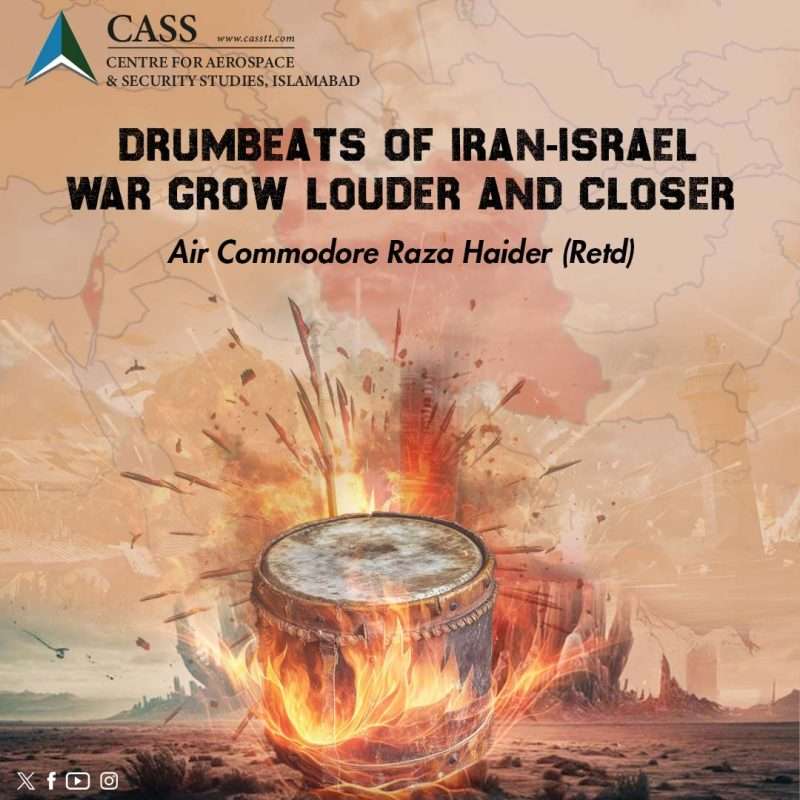Escalating tensions between Iran and Israel have placed the region on the brink of war, sparking global concerns. Recent events, including Israeli airstrikes targeting figures such as Ismail Haniyeh and Hassan Nasrallah, followed by Iran’s missile retaliation, have heightened the sense of impending crisis. As the situation intensifies, it becomes critical to assess the military capabilities of both nations, along with those of their potential allies, in the event of a wider conflict. Furthermore, this analysis must extend beyond conventional military strength to include cyber warfare, a key component of Fifth Generation Warfare (5GW). This article aims to provide a comprehensive examination of the evolving Iran-Israel conflict, focusing on their respective military capacities and the likely nature of the warfare they may engage in.
One of Iran’s key strengths in the context of a potential conflict is its larger population and the human resources available for its armed forces. According to the Global Firepower 2024 Index, Iran has a population of 87.59 million, nearly ten times greater than Israel’s 9.04 million. This vast population disparity offers Iran a substantial advantage in terms of manpower, particularly for sustaining a prolonged conflict. A report from The New York Times highlights that Iran’s active-duty military strength comprises approximately 580,000 personnel, supplemented by around 200,000 reservists, making it one of the largest military forces in West Asia.
While population is a major element of power, Israel’s military strategy prioritises advanced technology and weaponry. With a defence budget of USD 24 billion, Israel vastly outspends Iran, whose defence budget is approximately USD 9.95 billion. This financial advantage enables Israel to invest heavily in technological superiority, particularly in air power, allowing it to maintain a more sophisticated and advanced military despite its smaller population
Currently, Israel has 612 modern fighter planes in its arsenal which are F-15, F-16 and F-35 while Iran has 551 medium-technology aircraft. However, to compensate for the difference in aircraft fleet capability, Iran has invested heavily in the development of indigenous missiles and drones. According to a 2017 report by the International Institute for Strategic Studies, Iran possesses one of the largest stockpiles of ballistic missiles in West Asia; some of which have a range of 2,000 kilometers. This capability of long-range high-speed missiles and drones has recently been shown by Iran in the last two attacks on Israel.
Iran also holds an advantage in ground and naval strength, possessing 1,996 tanks compared to Israel’s 1,370 and 19 submarines against Israel’s 5. However, experts believe that a ground or naval confrontation is unlikely in this conflict. Instead, the focus is expected to shift towards aerial and cyber warfare, where both nations have been actively building their capabilities.
In the context of cyber warfare, Israel has always been considered a cyber-superpower with Unit 8200 being the largest division of the Israel Defense Forces (IDF). This special force is credited for cyber espionage that paralysed Iran’s nuclear industry through Stuxnet attacks in 2010. Recently, in September, Israeli intelligence exploded hundreds of pagers and walkie-talkies in Lebanon through a cyber-attack which probably triggered hidden explosives implanted in the gadgets killing more than 30 and injuring more than 3500 people. Although Iran’s capability cannot be compared to that of Israel in terms of cyber domain, it is gradually building up and despite many years of sanctions, the country has been working to become self-reliant in cyber technologies. While Israel may be relatively more advanced in cyber warfare, the fast-growing and indigenous cyber capability of Iran cannot be ruled out.
Another crucial factor, beyond each nation’s own military capabilities, is the role of their allies in the event of a full-scale war. The United States is Israel’s most significant ally which may offer substantial military support to Israel. However, direct involvement by the US in an Iran-Israel theatre may create multiple issues for American troops stationed in strategically important Middle Eastern nations, in the vicinity of Iran. On the other hand, Iran also has allies; out of which Lebanon, Yemen, Syria and Palestine are already at war with Israel, and involvement of other allies can escalate the war to other countries.
Ultimately, the question on everyone’s mind is: What will be the ‘nature of war’? Imminent conflict between Iran and Israel is unpredictable. Israel’s technological edge, particularly in cyber capabilities, gives it a significant advantage over Iran. This superiority may prompt Israel to pursue a swift, targeted conflict, possibly with the support of its allies, to quickly achieve its objectives. Such a strategy would mirror the approach taken during the Gulf War of 1990, which involved rapid and decisive action to minimise prolonged engagement.
In contrast, Iran’s strength of military manpower, big inventory of missiles and drones, ability to endure prolonged warfare (like the Iran-Iraq War of eight years) and ability to withstand sanctions through self-reliance, can turn the tide of the fight in its favour by adopting the strategy of a long war.
Whatever the case, an Iran-Israel war would have devastating repercussions and have a significant impact on the world economy, especially on oil prices. Potential closure of the Strait of Hormuz, through which nearly one-fifth of the world’s oil supply is transported, would have far-reaching consequences. This disruption would not only affect countries reliant on oil imports but would also send shockwaves through global markets, leading to a spike in commodity and energy prices. The resulting increase in costs could, in turn, drive up inflation worldwide, exacerbating economic challenges for many nations. With the stakes so high, international organisations and world leaders must concentrate on de-escalation efforts to prevent such conflict.
Raza Haider is a retired Air Commodore, currently serving as Director at the Centre for Aerospace & Security Studies (CASS), Islamabad, Pakistan. The article was first published in The Gulf Observer. He can be contacted at: [email protected].





